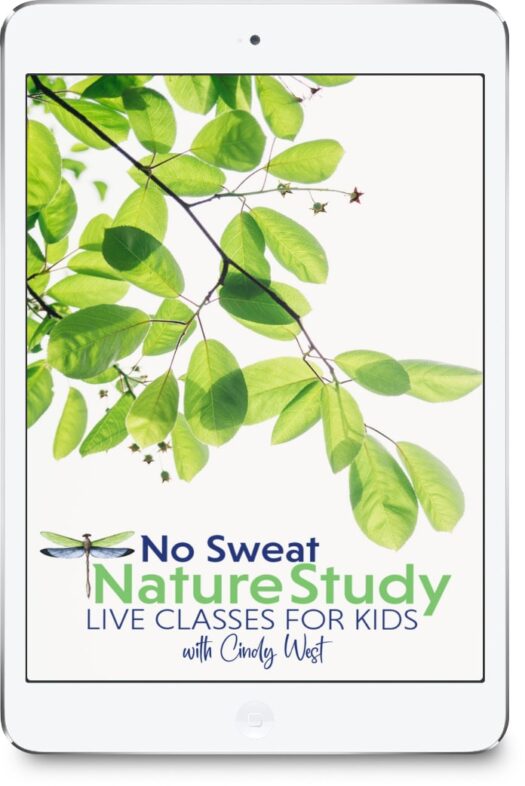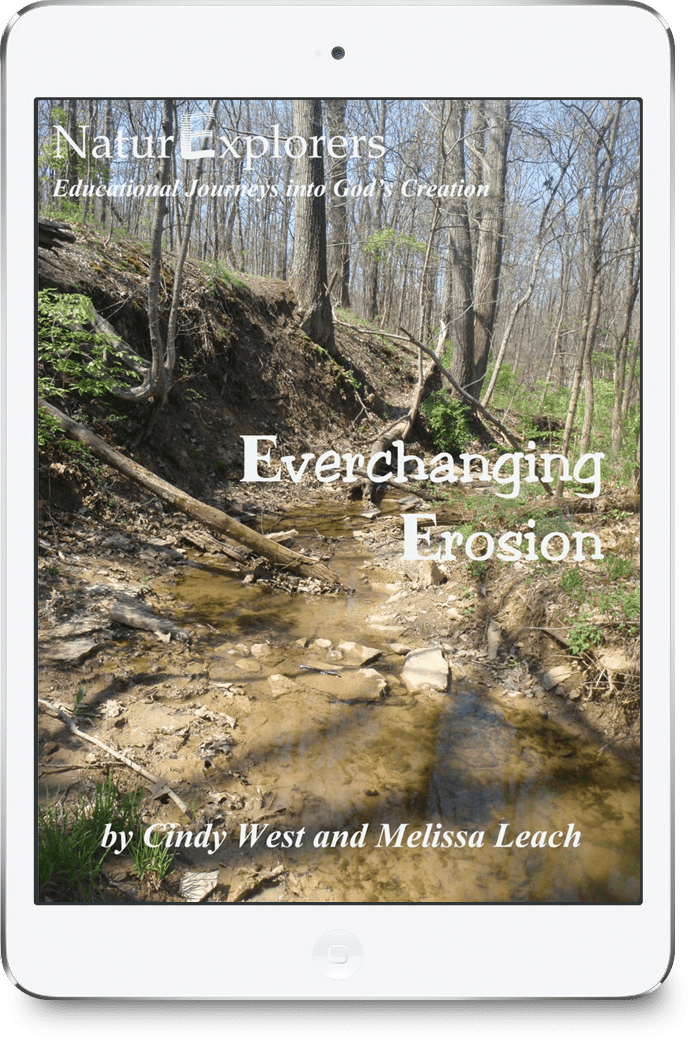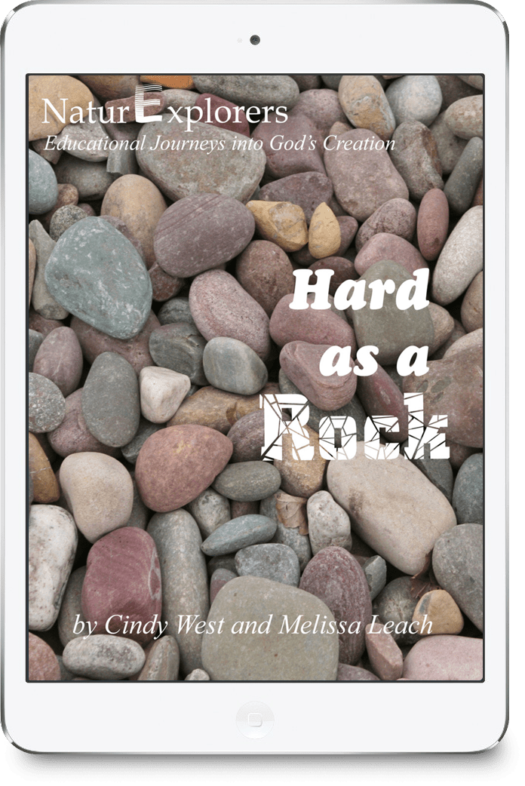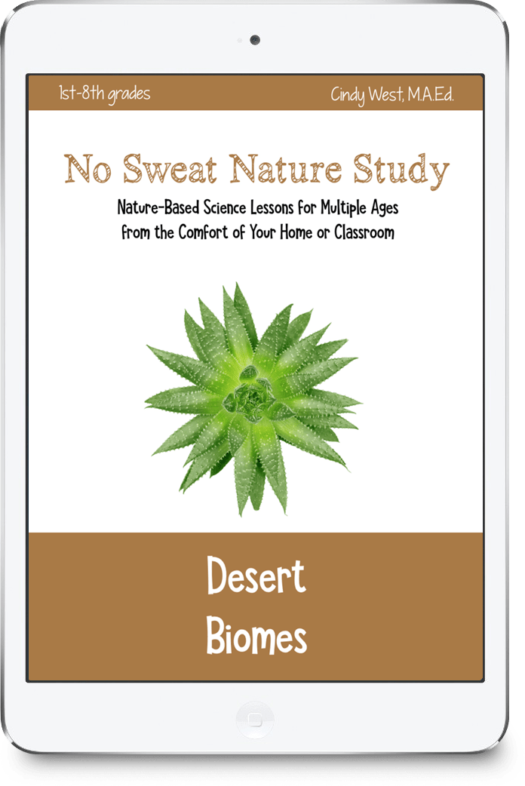Soil Nature Study
Are you ready for soil nature study today? In this episode of the No Sweat Nature Study podcast, Mrs. Cindy will give you a simple, but fun challenge. Expect to get a little dirty!
Normally, we learn about a nature topic first and then you hear about your nature walk challenge, but this one is flip-flopped. Let’s get ready for your nature walk challenge first so that you can be ready to learn when I start teaching you.
This nature walk challenge is probably the easiest one yet because you might not have to walk far at all. You can probably guess that I’m going to ask you to do a little digging today. It should be fun for you to sift through the soil while you’re listening to the lesson!
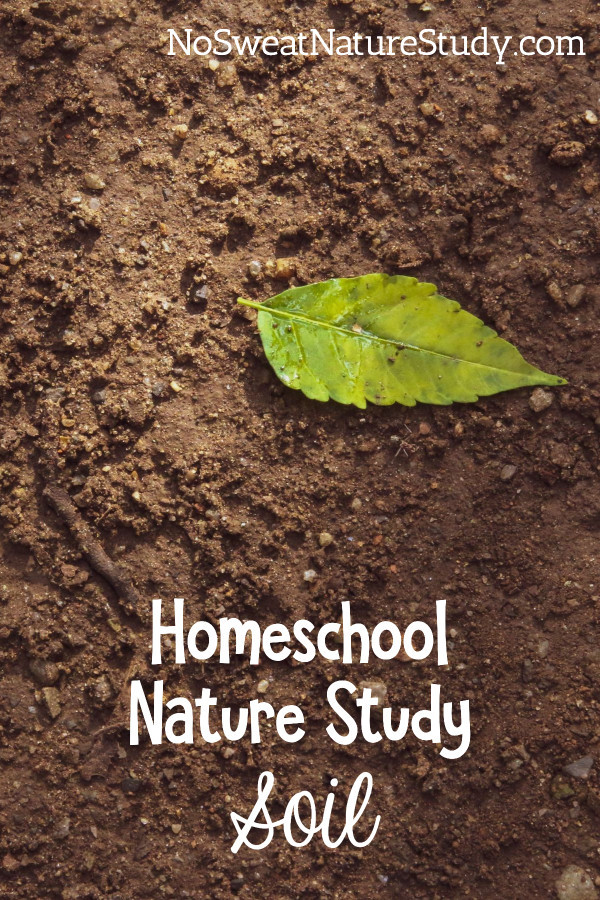
This post contains affiliate links.
Soil Nature Study Supplies
You’re going to need a few supplies before heading outside. First, grab a trowel (that’s a small shovel) or a big shovel. Of course, you need your nature journal and a pencil. And then here are a few extra things you might want to grab: a WHITE sheet, pillowcase, or paper towel, a magnifying glass, and some clear tape.
Before you head outside, I need to tell you two very important things first. You must absolutely get permission before digging any holes. Don’t begin digging anything until you have permission. Okay? And, you need permission before taking a white sheet or pillowcase out of the house. It will get dirty and you need to be sure that’s okay before using it.
The white things, the magnifying glass, and the clear tape are optional, but you really do need the trowel or shovel and your nature journal and pencil.
Go ahead and click pause until you’ve gathered your supplies and then head outside (making sure you have permission to dig) and then click play again.
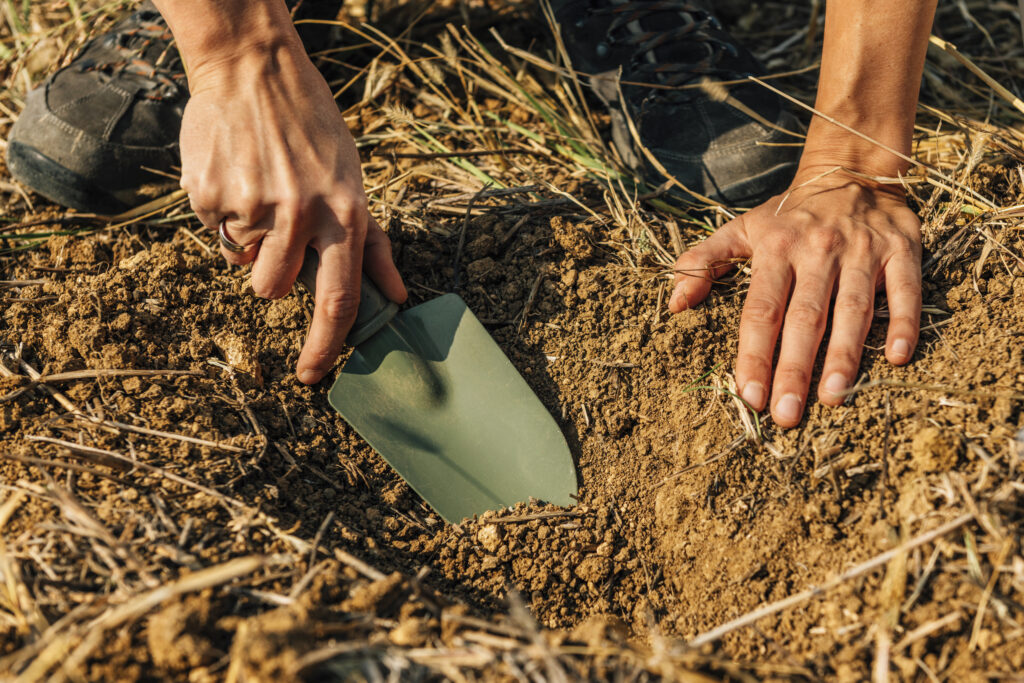
Soil Nature Walk Challenge
Now that you have your supplies and you’re outside ready to dig, use the trowel or shovel to dig a small hole in the ground. It doesn’t have to be big at all. In fact, you really just need a couple of handfuls of soil.
If you brought along a white sheet, pillowcase, or paper towel, sprinkle a couple of big handfuls of soil on top. The purpose is to, hopefully, be able to see some of the materials that make up the soil. (If you don’t have a sheet, a pillowcase, or a paper towel, try placing your handfuls of soil on a sidewalk or a porch. A paper plate would work too.
The goal is to begin sifting carefully through the soil to begin looking for some of the materials that it’s made from. If you brought along a magnifying glass, that will be a helpful tool for you see some of the smaller materials better.
As you find something new in the soil, you can do one of two things. First, you could draw what you see in your nature journal. Or, you could take a small specimen and tape it into your nature journal. Either way, if you know what it is that you’re observing, label it in your nature journal. If you don’t know what you’re observing, that’s okay. Maybe something I tell you in just a minute, we’ll help you figure that out.
Even though I’m sure I don’t need to tell you this, please DO NOT tape any living creatures into your nature journal. Just sketch them instead.
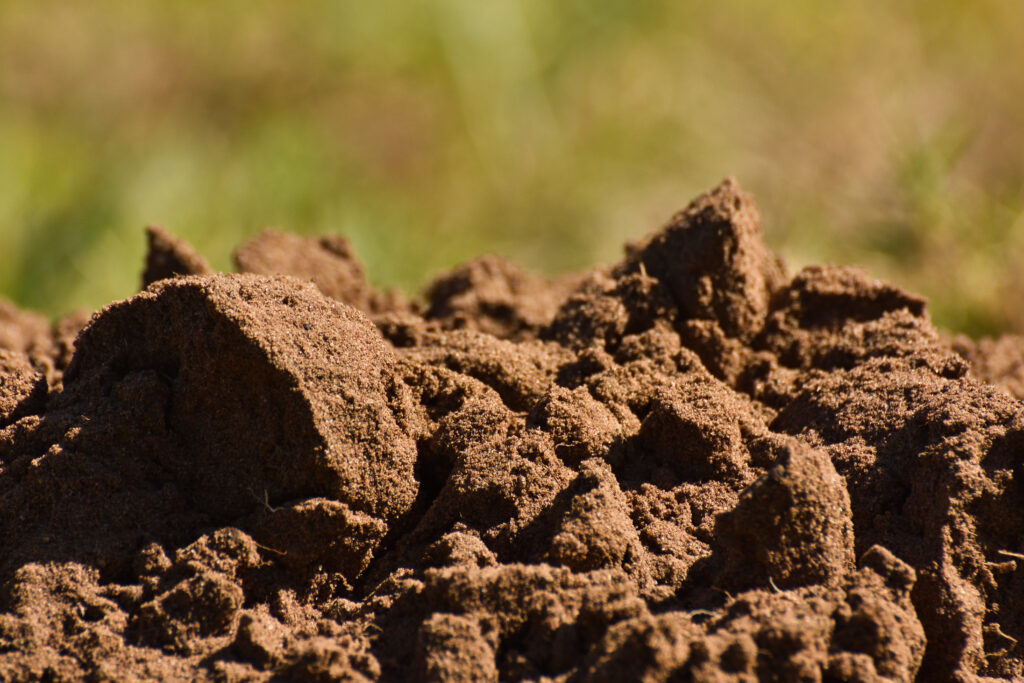
About Soil Materials
What are you looking for in your sample today? Well, let’s first try to describe what type of soil you have. There are three main types, sand, silt, and clay. Sand is light, warm to the touch, and it’s relatively dry. It sifts through your fingers easily.
Completely the opposite of sand is clay. It’s heavy and it drains water very slowly. Clay particles tend to stick together so that you can make a ball from them that you could actually throw, and it wouldn’t fall apart easily.
In between sand and clay is silt. It looks and feels more like what you buy from the store when you need to fill up pots for planting things.
Most of the time, the soil isn’t just sand, clay, or silt. Often you’ll find a mixture of two types or even all three.
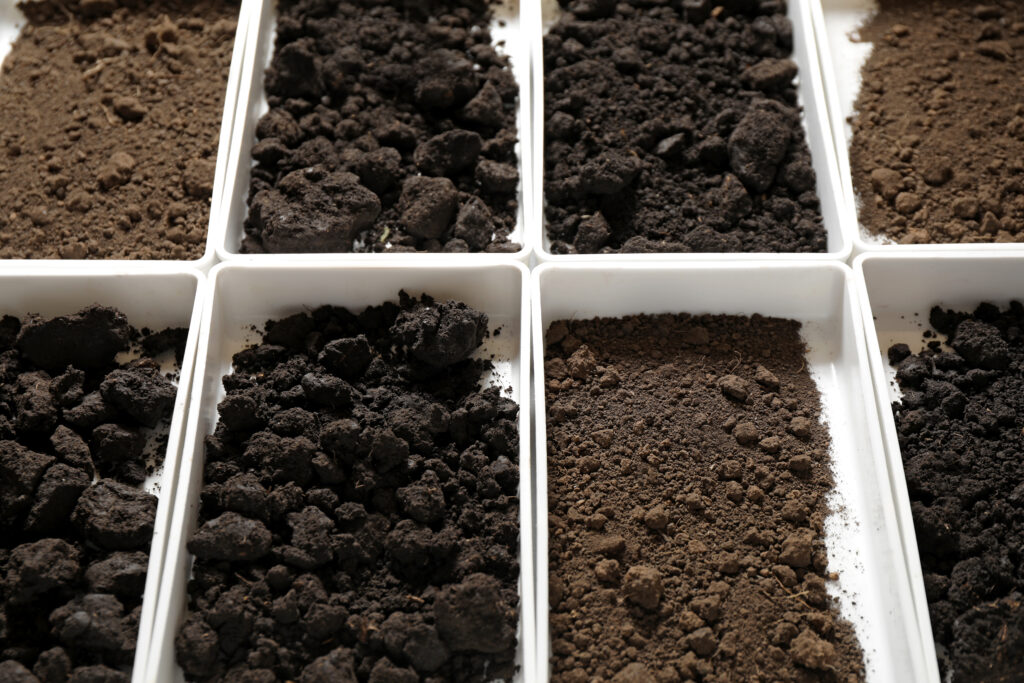
Organic and Inorganic Soil Materials
No matter what type of soil you have in front of you, it’s made of organic materials and inorganic materials. When you’re talking about earth science, organic means things that are or were at one-time living. Inorganic means things that have never been alive before.
Start by looking for inorganic materials. There are a couple of things that you can look for pretty easily. First rocks of all shapes and sizes, pebbles, sharp ones, various colored ones. Rocks can often be found in the soil.
And then there are minerals. There are lots and lots of minerals in the soil, but we don’t often see them because they’re microscopic. You likely won’t be able to see them even with a magnifying glass because they need to be under a microscope. But if you happen to find a rock in your soil that has some sparkly specs, when the light hits it, you might be looking at minerals. Minerals don’t have to be sparkly, but oftentimes those sparkly things in rocks are minerals.
Organic things that you find in the soil could be living things like insects or the roots of plants. Or, dead things like dead insects or dead plants.
There are also organic materials in the soil that are decomposing. A dead leaf that kind of sort of looks like a dead leaf, but it’s being broken down into smaller and smaller bits is an example of something that’s decomposing. Those dead things eventually become part of this soil and that’s a very good thing because it delivers more nutrients into the soil to keep plants healthy that are growing in the soil.
If your soil sample happens to be wet, you can be sure that water is present. Water is often present in soil!
Something else that you can’t see, but it’s also very much part of the soil is air. Yes, believe it or not, even underground there is air.

I hope you’re finding plenty of organic and inorganic specimens in the soil and adding them to your nature journal through drawings or by taping them in. Whatever you can identify, go ahead and label that. If you can’t identify something, that’s okay. You might consider doing some research on the internet to try to figure out what you’re seeing. Or, you could just leave it for now and maybe you’ll come across a book or some information at another time that’s helpful. You can turn back to your nature journal page and say, “Oh, I figured out what that specific specimen was!”
The point of nature study isn’t always to know everything. It’s to be a good observer. As you become a good observer, you learn more and more over time!
I hope you’ll join me next week for a very windy episode. Until then happy nature exploring!
Links & Resources
Please leave a rating or a review on your podcast app! It helps the podcast to show up for more people…which means more families can enjoy science through the wonderful lens of nature study! Thank you!

